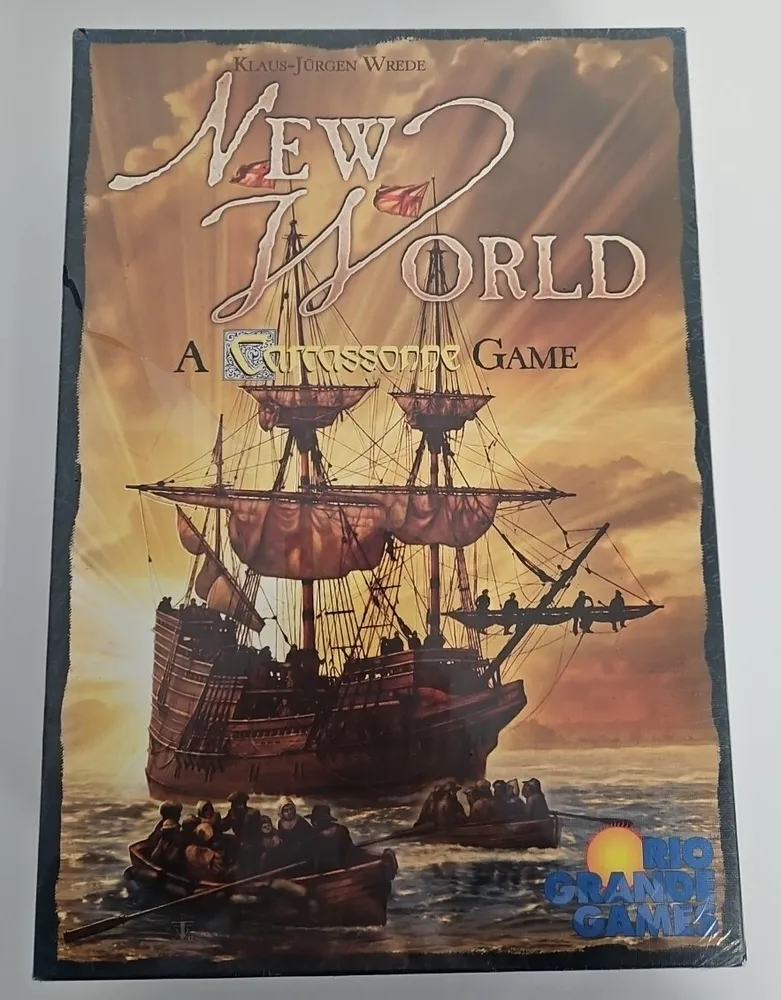New World: A Carcassonne Game (2008)
New World: A Carcassonne Game”New World: A Carcassonne Game” is a German-style board game that allows players to explore and settle the New World, aka America. It is part of the Carcassonne series, created by Klaus-Jürgen Wrede, and was published in 2008. The game is popular and significant due to its connection to the Carcassonne series, which has sold over 12 million copies and has been officially translated into 22 languages.
Game Components of New World: A Carcassonne Game
How To Setup New World: A Carcassonne Game
To set up the game, place the game board on the table so that the starting spaces face towards the middle. Shuffle the land tiles face down and stack them in several face-down stacks for easy access. Each player selects 6 settlers in their color, placing one as their scoring marker on the “0” space of the scoring track and the remaining 5 in front of them. The two surveyors are placed on the starting spaces at opposite ends of the game board. The youngest player determines who starts the game.
Gameplay Mechanics and Game Objective
Player Experience
**New World: A Carcassonne Game** offers a engaging and strategic experience, blending the classic tile-laying mechanics of Carcassonne with the thematic exploration of the New World. Players must balance the need to build and complete features with the pressure of keeping up with the surveyors as they move westward. This adds a dynamic layer of strategy and time management, making the game appealing to fans of the series and newcomers alike.
Pros
Cons
Personal Thoughts on New World: A Carcassonne Game
**New World: A Carcassonne Game** is an excellent choice for fans of the Carcassonne series looking for a new twist or for anyone interested in a strategic and thematic board game experience. It is particularly suited for players who enjoy tile-laying games and are looking for a bit more complexity and depth. However, it may not be the best introduction for complete beginners to the series due to the additional mechanics introduced by the surveyors.
We are supported by our audience. When you purchase through links on our site, we may earn an affiliate commission, at no extra cost for you. Learn more.

